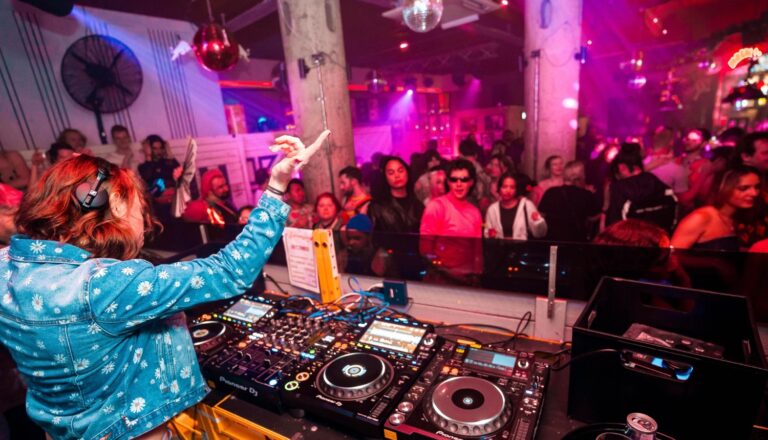
The Man On The Train
Fifty-five-year-old Parisian director, Patrice Leconte, is prolific, to say the least. He has made 20 features in 30 years of filmmaking and is known for constantly reinventing his moviemaking style. Leconte’s films have ranged from costume dramas, including the Oscar-nominated Ridicule (1996) starring Fanny Ardant and The Widow Of St Pierre (2000) starring Juliette Binoche, to the black comedy Monsieur Hire (1989), to unconventional romances such as The Hairdresser’s Husband (1990) and The Girl On The Bridge (1999).
Leconte’s latest film, L’Homme Du Train, which won the Audience Award at Venice last year, is also a new direction for him, a more optimistic, simple fable-like film in which, he says, he could explore more basic existential questions of love, friendship, ageing and the pursuit of impossible dreams. Despite the hyperbole from the director, The Man On The Train is very much a mid-life crisis film about male bonding, infatuation and lost dreams. His latest film also ties in neatly with his long-held interest in friendship and fate as well as the passage of time and the choices we make.
The Man On The TrainÂ
brings together 72-year-old doyen of French cinema Jean Rochefort (in his seventh film for Leconte) and Johnny Hallyday, the 60-year-old French pop icon who has been acting since he was 12 and who is known as the French Elvis. This yin and yang effect would be comparable to casting the likes of Elvis Presley and Peter O’Toole in a film set in an American provincial town. Rochefort really plays an old woman who longs for a wild cowboy life on the wide open plains with a good companion whilst Hallyday is the wild, rugged, silent type who longs to settle down.
Seventy-year-old Claude Klotz, who is better known as the French novelist Patrick Cauvin, writer of mystical thrillers such as Dracula And Son, was commissioned to write the screenplay. He also wrote the screenplays for The Hairdresser’s Husband and Leconte’s previous film, Felix And Lola.
The film, which portrays the protagonists as heterosexual, nevertheless has a strong gay sensibility implied in the bonds of affection developed between the unlikely characters. Sexuality and obsession are familiar territory for Leconte, who has made films in the past about men who believe their troubles would be at an end if they could get rid of the women in their lives.
The style of The Man On The Train takes many cues from spaghetti westerns. Leconte uses visual simplicity, textural rawness and extension of time to achieve emotional, rather than action-oriented effects. Cinematographer Jean-Marie Drejou uses a de-saturated film stock to give the film a 19th century daguerreotype feel at times to accentuate the stylised feel of the drama. Pascal Esteve’s score uses music from Ry Cooder to Schubert to bind and define the characters.
The Man On The Train is probably not Leconte’s greatest work and will certainly not appeal to those fans who are used to more powerful imagery and robust performances. The story really is a sweet fable about fate and the intersection of lives, a slow-moving river with a surreal, transcendental denouement of sorts as a climax.









